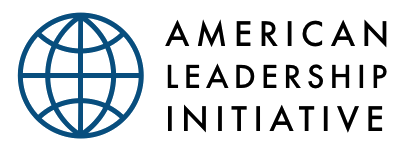Winning The Future Of Work: Developing A Comprehensive Strategy For A 21st Century Workforce
/By Conor McKay, Project Director at Freedman Consulting
Rapid technological advancement and an increasingly interconnected global economy are fundamentally changing the landscape in which U.S. businesses and workers must compete. For workers to succeed in tomorrow’s economy, we must ensure they have the tools and support they need to transition and adapt. But unlike many of our foreign competitors, the United States had no strategic plan for managing this economic transition, much less one for winning the future.
The United States must launch a comprehensive effort to make sure that American workers are prepared for the technological challenges of the 21st century. Other nations are facing the same economic and workforce challenges as the U.S. – and many are far ahead of in preparing for change through long-term economic growth plans and ongoing investments in workforce development and upskilling. This piece takes a look at the American labor market, the skills that the American workers will need to prepare for the future and the policies that needed to ensure that our workers are ready to compete and win.
A Human Capital Strategy for the 21st Century
American workers are facing major shifts in the types of work available and the skills those jobs require. Automation of middle-skill occupations in the U.S. threatens to exacerbate wage polarization and displace as much as a third of the workforce by 2030 – even as emerging economies, including China and India, see a growing middle class. Work increasingly requires digital and tech skills, leaving many older workers especially at risk. New business models are disrupting the employer-employee relationship, with more Americans in unstable work environments, often without critical benefits and protections. And workers lack the supports they need to transition and adapt to this changing labor market. Insufficient workforce investments and adjustment assistance has already led to widening inequalities and regional economic divides – as well as political strife.
Businesses, too, will suffer if there is a skills gap, and demographic trends mean we are headed for a significant structural shortage of working-age adults. Businesses cannot expand and growth will be capped if we don’t have the human capital necessary to fill open positions. Already, the number of unfilled jobs sits at a record high of 6-7 million. According to recent Gallup polling, companies in major industries report that they cannot grow and compete because of a talent shortage, with 49 percent saying they have unfilled job openings and 37 percent forgoing new initiatives.
Meanwhile, our foreign competitors are doing far more than the United States to prepare their workforce for the future. Denmark is the world leader in adjustment supports for unemployed and displaced workers – contributing to higher levels of public support for free trade and adoption of disruptive technology. Singapore has created new lifelong learning benefits so its workers can continuously upskill. Germany boasts a much-heralded apprenticeship system in which 60 percent of youth train as apprentices in fields such as advanced manufacturing and IT, compared to just 5 percent in the U.S.
By contrast, the U.S. ranks near the bottom among OECD countries on public spending on labor market programs as a share of GDP. And the trendline has been headed in the wrong direction. Over the past 15 years, the Department of Labor’s budget for grants to states to support job training programs has fallen by more than half after counting for inflation. Worse, the past several decades have seen steady declines in private sector investment in workforce training – with a falling share of workers receiving on-the-job or employer-sponsored training.
Source: https://data.oecd.org/socialexp/public-spending-on-labour-markets.htm
To make sure the U.S. remains a global leader and that American businesses continue to have the talented labor force it needs, government, business and civil society do far more to help prepare future workers.
The U.S. must revitalize and expand transition and adjustment policies to help workers at risk of job displacement reskill, be geographically mobile and weather the financial challenges of disruption. We need to empower workers to gain new skills throughout their careers, with new supports such as lifelong learning accounts. Funding for job-training programs should be increasing, not decreasing, during periods of significant change – perhaps by making more funding for the Department of Labor’s Workforce Innovation and Opportunity Act counter-cyclical. Businesses must do more, boosting private sector investment in training and upskilling, so that workers are not on their own. Policymakers can help through new training tax credits and changes to the tax treatment of workforce spending.
Our education system and hiring culture need to be more competency and skills based. The U.S. also needs to find ways to expand the labor supply so that demographics don’t stunt growth – including through comprehensive immigration reform, family leave and other support for working parents, as well as efforts to improve labor force participation by fighting the opioid epidemic and pursuing criminal justice reform and reintegration programs.
There is considerable political will today to address the U.S. workforce and jobs challenges. But to guarantee that these efforts are sustainable over the long-term, we also need process changes to ensure that the strategy is durable and that these issues don’t fall off the agenda when the political winds shift. Creation and stewardship of a comprehensive national competitiveness strategy be a permanent responsibility of the any administration and Congress. Scholars at the Center for American Progress already proposed a number of ideas how to align administration policy – including through quadrennial reviews, a biannual presidential agenda and a new competitiveness agency. These ideas should be revisited, and others considered as well – including how best to align efforts across relevant Capitol Hill committees.




